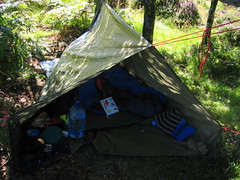SWOT analysis and challenge of Nile Basin Initiative; an Integrated Water Resource Management perspective
1. Introduction
It is on record that river Nile is one of the world’s longest transboundary rivers flowing a distance of more than 6,700 kilometres from its farthest source at the headwaters of the Kagera Basin in Rwanda and Burundi to the Mediterranean Sea in Egypt. Its catchments basin covers approximately 10% of the African continent and river is shared by ten riparian countries which include Burundi, Democratic Republic of Congo, Egypt, Ethiopia, Eritrea, Kenya, Rwanda, Sudan, Tanzania, and Uganda.
The Basin contains an extraordinarily rich and varied range of ecosystems, with mountains, tropical forests, woodlands, savannas, high and low altitude wetlands, arid lands and deserts (World Bank, 2008). Since the Nile waters do not stop at administrative or political boundaries, the river basin has been of great importance as regards human settlement, development of a rich diversity of cultures, civilisation and development for centuries. As of today, the Nile is a crucial resource for the economic development of the Nile basin States and a vital source of livelihood for 160 million inhabitants as well as 300 million people living in the ten riparian countries (Ibid). It’s estimated that in the next 25 years, the population in the Nile basin will be 600 million.
Nevertheless, for decades, the Nile basin people have been facing many complex environmental, social, economic and political challenges that have made it difficult of the proper management and sustainability of Nile water. Such problems include among others, disputes and conflicts over the control and use of the Nile waters; extreme poverty, food insecurity; droughts; floods; environmental degradation exacerbated by high
Pages: 1 2 3 4 5 6 7 8 9 10 11 12 13 14 15 16 17 18 19 20 21 22 23 24
